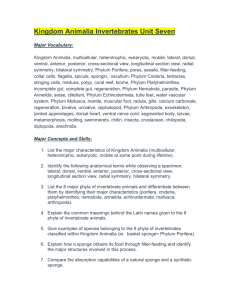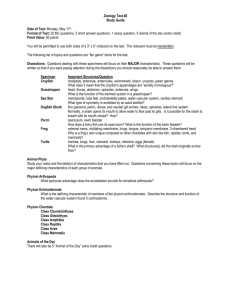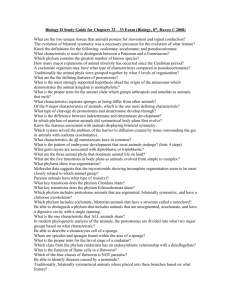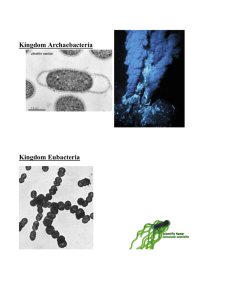Survey of the Animal Kingdom
advertisement
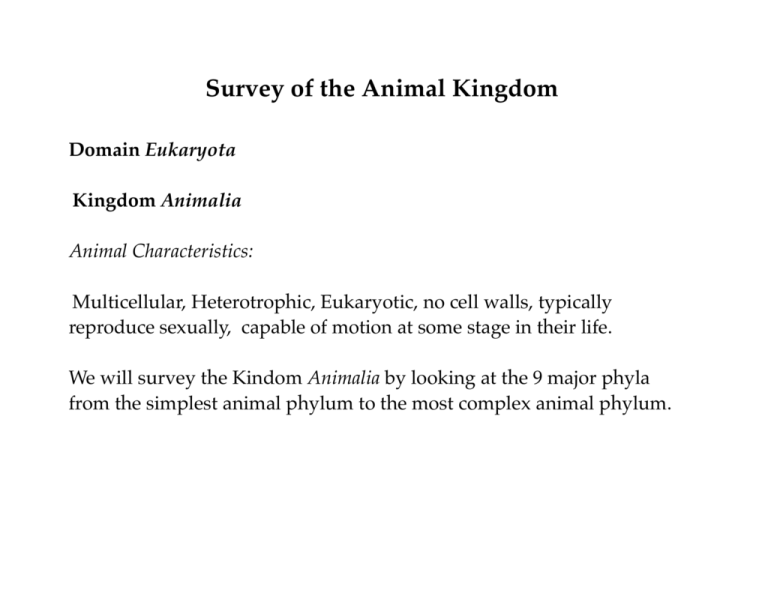
Survey of the Animal Kingdom Domain Eukaryota Kingdom Animalia Animal Characteristics: Multicellular, Heterotrophic, Eukaryotic, no cell walls, typically reproduce sexually, capable of motion at some stage in their life. We will survey the Kindom Animalia by looking at the 9 major phyla from the simplest animal phylum to the most complex animal phylum. Magical Mystery Tour of the Animal Kingdom The Beatles-Magical Mystery Tour.mov I wish there was more of "my time"! Look at how many phyla we could study!!!!!! http://en.wikipedia.org/wiki/Phylum These are the 9 major phyla we will study: Phylum Porifera Phylum Coelenterata/Cnidaria Phylum Platyhelminthes Phylum Nematoda Phylum Annelida Phylum Mollusca Phylum Arthropoda Phylum Echinodermata Phylum Chordata SYMMETRY Symmetry-- Body Plan. How body parts are arranged. The balanced distribution of duplicate body parts or shapes. 3 types of symmetry are seen in animals. 1) Asymmetry--No Body Plan Ex. Sponges 2) Radial Symmetry- Body parts arranged around a center point. --Any cut through central point results in identical halves. --No head, front, back. --Oral surface and an Aboral surface. Ex. Sea Anemone, Jellyfish, Starfish, Sea Urchin 3) Bilateral Symmetry- Arrangement of body parts along a central line or plane. --Only one way to cut to get mirror image halves. --Use terms like: anterior, posterior, dorsal, ventral Ex. Worms, lobster, whale, clams, human, squid All bilaterally symmetric organisms have a dorsal, ventral, anterior, and posterior region.


